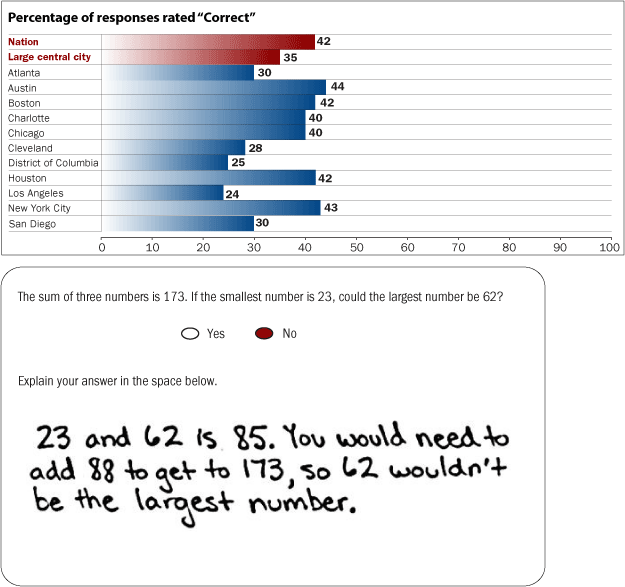 This sample question measures eighth-graders’ understanding of number properties and operations.
This sample question measures eighth-graders’ understanding of number properties and operations.
Student responses were scored according to a two-level scoring guide as "Correct," or "Incorrect." The sample response below is an example of a "Correct" response.
The percentages below indicate how each jurisdiction performed on the question.

See more about this question in the NAEP Questions Tool.
View this question, at score 317, on a map of NAEP mathematics items.
SOURCE: U.S. Department of Education, Institute of Education Sciences, National Center for Education Statistics, National Assessment of Educational Progress (NAEP), 2007 Trial Urban District Mathematics Assessment.